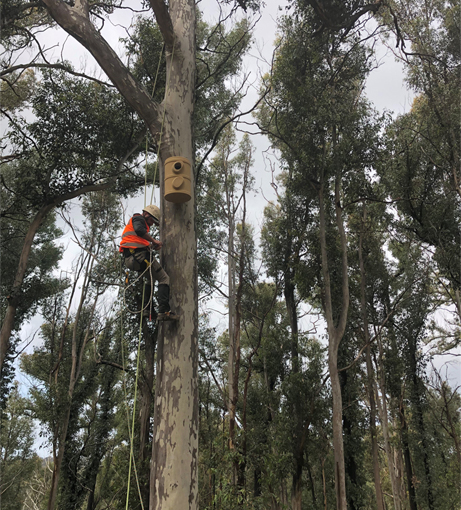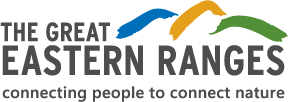
Microbats, gliding possums and small parrots are some of the native animals set to benefit from new, state of the art homes in the Kanangra-Boyd to Wyangala (K2W) Link section of the GER corridor.
The K2W partnership has teamed up with conservation start-up, Habitat Innovation and Management, to install fifty injection moulded nest boxes to replace lost hollows in areas impacted by the 2019-20 bushfires across the Greater Blue Mountains to Wyangala Dam.
The innovative Habitech nest boxes, which comprise a double-walled plastic outer with a timber internal chamber, were carefully designed by ecologist Mick Callan and a team of researchers at Charles Sturt University to mimic the stable microclimate of a real tree and blend in with surrounding bushland. The modular nest box system, with customisable entrances to suit a wide range of animals, attaches to trees using a simple bracket system.

Early trials of the artificial hollows by Mr Callan have been successful, with animals found moving into the nest boxes within just a week of installation.
The project is being funded through a partnership between the Great Eastern Ranges and the International Fund for Animal Welfare (IFAW) Australia as part of a broader effort to heal bushfire affected wildlife and communities in three priority landscapes in NSW and QLD.
“The 2019-20 bushfires decimated millions of hectares of habitat including over 80% of the Greater Blue Mountains. It takes over 100 years before trees start to form the natural hollows on which many of our native wildlife depend. Many of these large ancient trees were lost to the flames,” said Gary Howling, CEO of Great Eastern Ranges.
“The installation of supplementary habitat, such as these Habitech nest boxes, provide wildlife with the immediate homes they need to survive whilst we focus on restoring their natural habitats and managing the threats to it.”
“The installation of supplementary habitat, such as these Habitech nest boxes, provide wildlife with the immediate homes they need to survive whilst we focus on restoring their natural habitats and managing the threats to it.”
Traditional nest boxes have a relatively short lifespan and can be several degrees warmer than the outside temperature, which can result in heat stress and even death for the inhabitants on extreme temperature days.
“We will be watching keenly to see how the Habitech nest boxes perform in situ and for opportunities to trial them in other of our priority landscapes,” said Mr Howling.
K2W is calling on landholders in the Upper Lachlan, Oberon and Wollondilly Shires to get involved in the project by installing Habitech nest boxes on their properties.
IFAW Landscape Conservation Officer Wendy Simpson says that collaborative, community-led projects such as these are vital for ensuring success on the ground.
“From the catastrophic Black Summer bushfires to land clearing, urban development and climate change, it’s more critical than ever that we find ways to co-exist with nature. We see collaborating with conservation groups and local landholders on habitat creation projects like this vital for communities and wildlife to survive and thrive together,” said Wendy Simpson.
Local landholders who would like to get involved in the K2W nest box project can contact Mary Bonet at mary@k2wglideways.org.au.



 Media release
Media release